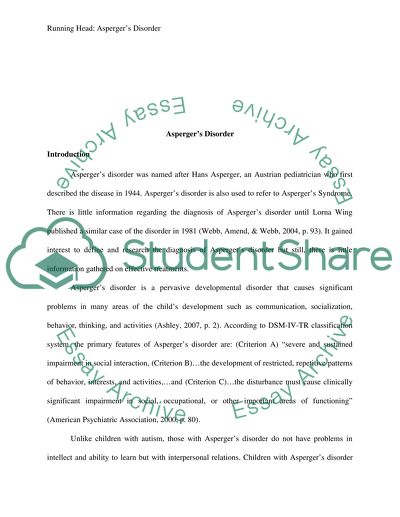Cite this document
(“Asperger's Disorder Term Paper Example | Topics and Well Written Essays - 1500 words”, n.d.)
Retrieved from https://studentshare.org/psychology/1425428-asperger-s-disorder
Retrieved from https://studentshare.org/psychology/1425428-asperger-s-disorder
(Asperger'S Disorder Term Paper Example | Topics and Well Written Essays - 1500 Words)
https://studentshare.org/psychology/1425428-asperger-s-disorder.
https://studentshare.org/psychology/1425428-asperger-s-disorder.
“Asperger'S Disorder Term Paper Example | Topics and Well Written Essays - 1500 Words”, n.d. https://studentshare.org/psychology/1425428-asperger-s-disorder.


